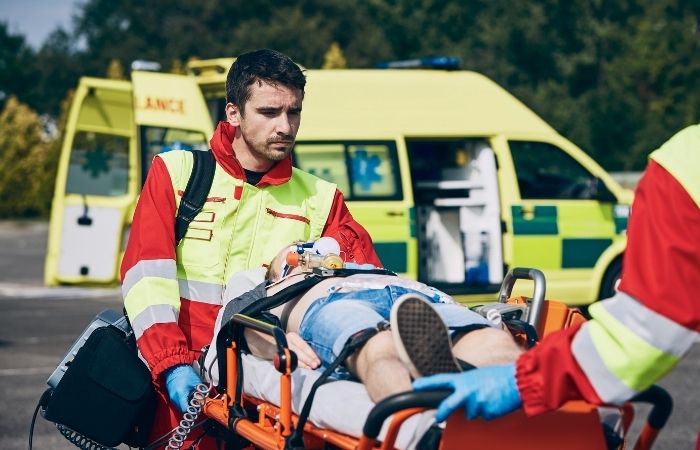Every year, millions of people around the world require emergency medical care. In many cases, time is of the essence when it comes to getting patients the treatment they need. That’s where aviation and emergency medicine come into play. Aviation plays a vital role in emergency medicine, providing a quick and efficient way to transport patients to hospitals and other medical facilities. In some cases, aircraft can be used to transport organs and vaccines that are time-critical.
Table of Contents
Organ Transportation
Air vehicles offer a unique solution for organ transportation for transplants. They can transport organs quickly and efficiently, and their use can benefit patients, surgeons, and hospitals alike. Organ transportation by air vehicle can reduce wait times for transplant patients. In many cases, organs must be transported long distances to be used for transplantation.
Air transportation can reduce the time it takes to transport an organ from point A to point B, making it possible for patients to receive the organs they need promptly. This can be a critical factor in saving lives.
According to Will Heyburn, the CFO of Blade, an air mobility company in the USA “In organ transportation, electric aircraft really can replace cars, because it is such a mission-critical trip.”
Blade recently launched MediMobility, in collaboration with NYU Langone Health, which provides on-demand helicopters and jet flights for the hospital’s transplant team. Air transportation can also benefit surgeons by reducing the amount of time they spend waiting for organs to arrive.
Access To Prompt Healthcare
Air ambulances or the use of aircraft for medicine can save more lives by providing timely access to emergency medical services. They can transport patients to and from healthcare facilities, provide critical care in-flight, and facilitate organ and tissue transplantation.
Air ambulances are typically equipped with advanced lifesaving equipment, such as ventilators and defibrillators, and are staffed by highly trained medical professionals. In addition, air ambulances can often reach remote or rural areas that would otherwise be inaccessible to ground ambulances. As a result, they play a vital role in ensuring that patients receive the care they need without any delay that can pose any threat to their life.
Medevac: Emergency Evaucation
Medevac refers to the emergency evacuation of casualties from a battlefield by military helicopter or fixed-wing aircraft operated by noncombatant medical personnel (e.g., doctors, nurses, and paramedics).
During combat situations, medevac helicopters are tasked with bringing wounded soldiers away from danger while under fire and across hostile terrain so they can be treated at field hospitals in safer areas behind front lines.
In non-combat situations such as natural disasters, medevac helicopters will evacuate patients who have sustained serious injuries or who require urgent medical attention that cannot be provided at local facilities due to a lack of resources or infrastructure damage caused by the disaster itself.
Disaster Relief
They may also be used for routine transfers between hospitals if ground transport is not available due to adverse weather conditions such as high winds and heavy snowfall that make it difficult for ambulances to reach certain locations on time.
An example was after Hurricane Katrina when many roadways were flooded or otherwise impassable due to fallen trees blocking roads and downed power lines causing electrical outages throughout New Orleans, Louisiana during August 2005.
In addition, helicopters can offer faster transport than ambulances in some cases where traffic congestion may delay arrival at a hospital by several hours. The most common example is heavy rush cities such as New York where regular ambulances have a higher risk of getting stuck in road traffic.
Immediate Medical Care For Remote Areas
Air ambulances are commonly found in places where ground access is difficult or impossible due to distance or terrain, such as mountainous regions and remote islands. It may also be used when a patient requires transportation over long distances where other transport options are not available or would be too slow for life-threatening situations.
Examples include… Ferrying patients between islands in Hawaii and across the vast Canadian landscape. Other countries have similar services usually provided by government organizations such as the Royal Flying Doctor Service of Australia and the Aeromedical Network of Finland.
A helicopter can often reach a scene faster than an ambulance on the ground. Helicopters can also transport multiple patients who are injured at different locations without having to return to an airport or helipad for each pickup. This reduces time spent transporting injured people to health care facilities, which is especially useful if they are critically injured and require immediate treatment upon arrival at the hospital.
In conclusion, air vehicles provide a unique and valuable resource for emergency medicine. By rapidly transporting patients to specialized care, they can save lives and improve outcomes. Additionally, they can reach remote or rural areas that would otherwise be inaccessible. Air vehicles offer a life-saving service that can make a real difference in the lives of those who need it most.


